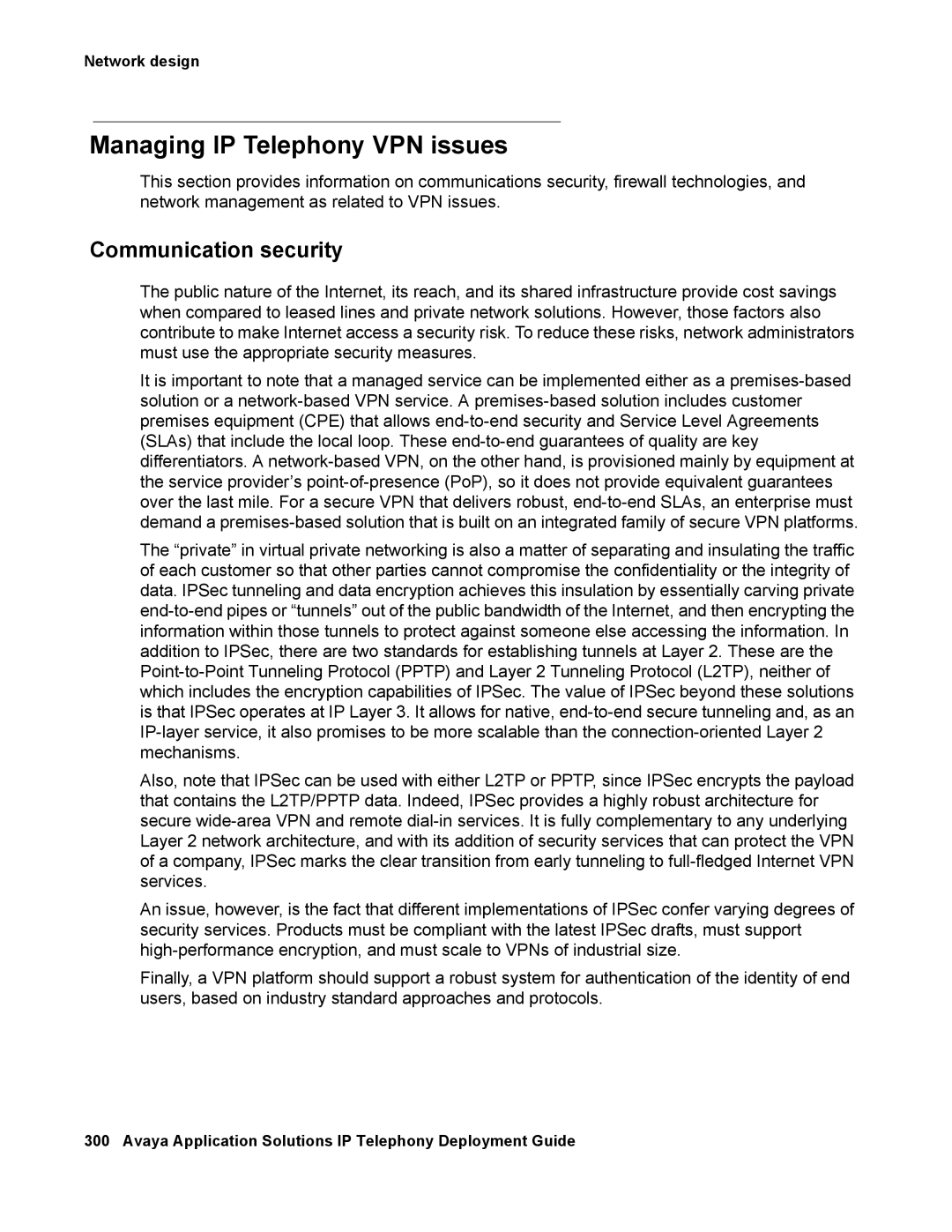Network design
Managing IP Telephony VPN issues
This section provides information on communications security, firewall technologies, and network management as related to VPN issues.
Communication security
The public nature of the Internet, its reach, and its shared infrastructure provide cost savings when compared to leased lines and private network solutions. However, those factors also contribute to make Internet access a security risk. To reduce these risks, network administrators must use the appropriate security measures.
It is important to note that a managed service can be implemented either as a
The “private” in virtual private networking is also a matter of separating and insulating the traffic of each customer so that other parties cannot compromise the confidentiality or the integrity of data. IPSec tunneling and data encryption achieves this insulation by essentially carving private
Also, note that IPSec can be used with either L2TP or PPTP, since IPSec encrypts the payload that contains the L2TP/PPTP data. Indeed, IPSec provides a highly robust architecture for secure
An issue, however, is the fact that different implementations of IPSec confer varying degrees of security services. Products must be compliant with the latest IPSec drafts, must support
Finally, a VPN platform should support a robust system for authentication of the identity of end users, based on industry standard approaches and protocols.
